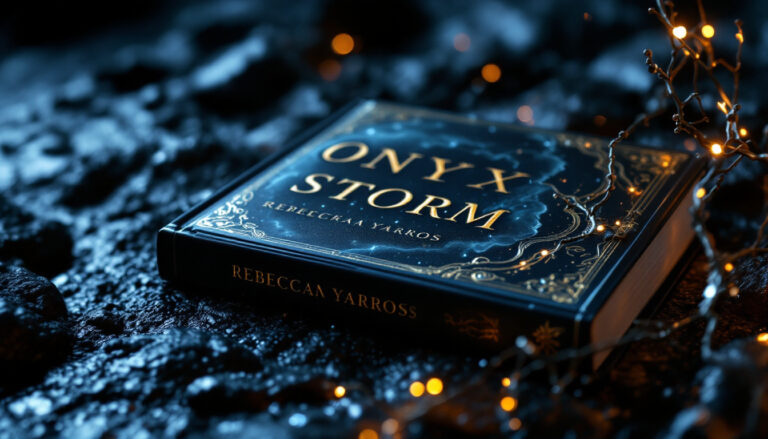Explore the Mysteries of The Shadow of the Wind by Carlos Ruiz Zafón
In the heart of 1940s Barcelona, where shadows whisper secrets, The Shadow of the Wind invites readers into a world steeped in mystery and rich with literary intrigue. This novel by Carlos Ruiz Zafón tells the story of a young boy named Daniel Sempere, whose life transforms after he discovers a forgotten book nestled within a hidden library. As he seeks to uncover the truth about the book’s elusive author, Julian Carax, he stumbles into a labyrinth of love, loss, and danger that mirrors the turmoil of post-war Spain.
What makes this tale resonate? It’s not just the enchanting plot but the themes of resilience in the face of loss and the enduring power of stories. For both seasoned readers and new book lovers alike, Zafón’s masterpiece serves as a testament to the magic that literature can hold. In this review, we’ll explore the layers that make The Shadow of the Wind an unforgettable read, touching on its characters, setting, and the emotions that linger long after the final page is turned. Get ready to immerse yourself in a captivating journey where every book has a story, and every story casts its shadow.
Overview of the Plot
Carlos Ruiz Zafón’s The Shadow of the Wind takes readers on a captivating journey through the streets of post-war Barcelona, weaving together themes of love, loss, and the profound impact of literature. The plot unfolds through various layers that center around the young protagonist, Daniel Sempere, as he uncovers the mysterious past of a forgotten author, Julian Carax.
Daniel Sempere’s Journey
Daniel Sempere is not just your typical young boy; he’s a curious soul eager to find meaning in the world around him. After discovering a book by Julian Carax in the Cemetery of Forgotten Books, he becomes fixated on the enigmatic author and his missing works. As Daniel delves deeper into Carax’s past, he realizes that the quest for knowledge often leads to unexpected dangers.
What drives Daniel is more than mere curiosity; it’s an obsession that transforms his life. His innocence is tested as he encounters a web of deceit and love, ultimately reflecting the struggle between good and evil. Daniel’s journey reveals not only the history of Julian Carax but also his own growth, marking his transition from adolescence to adulthood.
For more detailed insights into Daniel’s character arc, check out this summary here.
The Enigma of Julian Carax
Julian Carax is a figure shrouded in mystery. His life story unfolds through the eyes of Daniel, revealing a narrative filled with tragic love and unfulfilled dreams. Carax’s novels, much like his life, are haunted by darkness. He faces betrayal that alters his fate and fuels a desire for revenge against those who have wronged him.
What makes Carax’s character so compelling is the way his life mirrors the stories he writes. The significance of his books lies in their ability to connect with Daniel, echoing themes of longing and loss. As Daniel seeks to unveil the enigma of Carax, readers are compelled to ponder how the struggles of one person can resonate through generations.
To explore more about Carax’s character, see this analysis here.
Multi-Layered Mystery
The Shadow of the Wind is more than a simple narrative; it’s a complex tapestry of interwoven stories and timelines. The layers of mystery keep readers engaged, as each chapter unveils secrets that propel the plot forward. Zafón employs a multi-layered structure that intertwines Daniel’s present with Carax’s past, constructing a rich narrative experience.
The novel features multiple perspectives, allowing readers to experience the urgency of Daniel’s quest alongside the haunting echoes of Carax’s life. Each character contributes to the unfolding mystery, adding depth and complexity to the storyline. This structural sophistication invites readers to piece together the puzzle, making every reveal all the more rewarding.
For a deeper look into the themes and narrative structure, you can read more here.
By artfully blending these elements, Zafón creates a literary masterpiece that is as much about the journey of discovery as it is about the stories that shape our lives.
Themes and Imagery
The Shadow of the Wind is a rich tapestry of themes and imagery that resonates deeply with readers. The novel explores the complexity of human relationships, the scars left by historical conflict, and the transformative power of literature. Each of these elements intertwines, enriching the narrative and adding layers of meaning to Daniel Sempere’s journey.
Love and Friendship
The bonds of love and friendship are at the heart of The Shadow of the Wind. Throughout the story, we see how relationships shape the characters and influence their decisions. Daniel’s friendships with characters like Fermín Romero de Torres highlight the importance of loyalty and camaraderie in times of turmoil. Their partnership showcases a blend of humor and sorrow, illustrating how love can be both a source of strength and vulnerability.
In addition, Daniel’s connection with Clara Barceló adds depth to his character. Clara represents unfulfilled love, a theme that recurs throughout the story. Her ethereal presence serves as both a muse and a reminder of lost possibilities. Daniel’s quest to protect his loved ones drives the narrative forward, prompting readers to reflect on how love can inspire courage in the face of adversity. For a deeper exploration of love and friendship in Zafón’s work, check out this analysis on Themes in The Shadow of the Wind.
Impact of War and History
The backdrop of post-Civil War Spain serves as a critical element in the story. This historical setting adds weight to the characters’ experiences and decisions. The remnants of war and the oppressive atmosphere of Franco’s regime create a sense of urgency that permeates the novel. Characters are often shaped by their pasts, and Zafón does not shy away from illustrating the scars left behind by conflict.
The shadow of history looms over Daniel and his friends, influencing their struggles and aspirations. The narrative is steeped in a sense of nostalgia and loss, allowing readers to understand how the past can echo into the present. This connection to history reveals the characters’ resilience and the haunting memories that drive their choices. For more insights into how war and history influence the narrative, see this discussion on The Guardian’s overview of the book’s themes.
Books within the Book
Books play a pivotal role in The Shadow of the Wind, acting as both characters and symbols. The act of selecting a book in the Cemetery of Forgotten Books represents a profound connection to the past and a journey into self-discovery. Daniel’s choice of The Shadow of the Wind by Julian Carax is not just a simple plot point; it’s a catalyst for his transformation. This book influences his understanding of love, loss, and identity.
As Daniel molds his destiny around the stories he uncovers, Zafón invites readers to consider how books can intersect with reality. They offer escape, understanding, and reflection on life’s complexities. This theme reflects the love for literature and its ability to shape lives, showing readers that every book has a story that can forever alter one’s path. To further explore the theme of books within books, check this article on books and their symbolism.
Character Development and Setting
The Shadow of the Wind masterfully intertwines character depth with the setting of Barcelona, creating a rich tapestry that enhances the story’s emotional weight. The characters come alive against the backdrop of a city steeped in history, making their journeys feel intimate and relatable.
Character Strengths and Critiques: Analyze character depth and any critiques on character portrayal, especially of women.
Carlos Ruiz Zafón provides us with an array of characters, each with distinct strengths and vulnerabilities. Daniel Sempere, the protagonist, embodies curiosity and determination. As he navigates the complexities of his life, he transforms from an innocent boy to a reflective young man. His character growth is pivotal. Readers witness his struggles with love, loss, and betrayal, making him relatable.
However, critiques arise, particularly regarding the portrayal of female characters. While women like Clara Barceló and Nuria Monfort are vital to the narrative, their characterization can sometimes feel secondary to their male counterparts. Clara, for instance, is portrayed with an air of mystery but often lacks the agency and depth afforded to Daniel and others.
Nuria Monfort, on the other hand, presents a more dynamic personality. As a character with intentions and desires, she navigates danger with strength, adding layers to her role. This contrast raises questions about the depth of female representation in the story. Are female characters given equal footing, or do they exist primarily to support male narratives? A detailed analysis of the character dynamics can be found here.
The Atmosphere of Barcelona: Describe how the setting enhances the mood and immersive experience.
Barcelona serves as more than just a backdrop; it’s a character in its own right. The city pulsates with life and mystery, reflecting the transformation of post-war society. Zafón paints an evocative picture of narrow streets and hidden corners, where secrets linger and history whispers. As Daniel explores the labyrinthine alleys, the ambiance matches his internal struggles, highlighting the connection between character and setting.
The shadow of the Spanish Civil War looms large, creating an atmosphere filled with nostalgia and unresolved tension. Readers can almost feel the dampness of the streets or visualize the flickering candlelight in the Cemetery of Forgotten Books. This immersive experience engages the senses, allowing readers to walk alongside Daniel in his journey of discovery.
Zafón also uses the city’s landmarks—like the magnificent Sagrada Familia and the haunting Gothic Quarter—to ground the emotional landscape. Each setting contributes to the mood, enhancing the reader’s understanding of the characters’ motivations. For those eager to explore the streets of Barcelona as depicted in the novel, take a look here.
In essence, the characters and the setting work in harmony, enveloping readers in a world where every shadow tells a story, creating a memorable reading experience.
Writing Style and Literary Elements
Carlos Ruiz Zafón’s The Shadow of the Wind captivates with its rich writing style and intricate literary elements. The lyrical quality of the prose draws readers into a world filled with emotion and depth. From poetic language to multiple narrative techniques, every element enhances the story’s allure.
Poetic Language and Allusions
Zafón’s writing is imbued with a poetic touch that brings the story to life. The lyrical quality of his prose resonates throughout the novel. For instance, vivid imagery paints a picture of Barcelona, immersing readers in the atmosphere of the city. The author employs allusions that weave a tapestry of meaning, allowing readers to reflect on themes of love, loss, and obsession.
Metaphors abound in Zafón’s descriptions. The shadows of the city symbolize the secrets hidden within its streets. References to literary works elevate the narrative, inviting comparisons to classic themes. For example, Zafón hints at works like Odysseus’s journey, echoing the quest for identity and purpose. Such allusions enrich the reading experience and invite deeper contemplation of the characters’ motivations. You can find a detailed discussion of these literary elements here.
Narrative Techniques
Zafón skillfully employs multiple perspectives, creating a layered storytelling experience. This technique allows readers to view events through various characters’ eyes, adding depth and complexity to the narrative. As Daniel Sempere embarks on his journey, glimpses into other characters’ thoughts provide insight into their motivations and histories.
This shifting perspective heightens suspense and engages readers by revealing secrets gradually. It also emphasizes the interconnectedness of the characters, suggesting that everyone’s story intertwines. Zafón’s narrative structure invites readers to piece together the puzzle of Carax’s life alongside Daniel. The use of first-person and third-person narration creates a dynamic reading experience that keeps you wanting more. For additional insights on the narrative techniques used in the novel, check this analysis here.
Through poetic language and effective narrative techniques, Zafón crafts a rich literary landscape. His writing style invites readers to lose themselves in the beauty of the words while contemplating the larger themes at play.
Conclusion
The Shadow of the Wind offers readers a captivating experience rooted in mystery and rich emotional depth. Zafón’s ability to weave together the threads of love, loss, and the power of stories creates lasting impressions.
For those who cherish literary journeys, this novel stands out as a profound exploration of how books can shape our lives. While some may critique elements of character portrayal or narrative complexity, the overall impact of Zafón’s work remains undeniable.
Have you discovered your own hidden treasures in literature? Or is there a story that has profoundly affected your journey? Feel free to share your thoughts and favorite reads!







